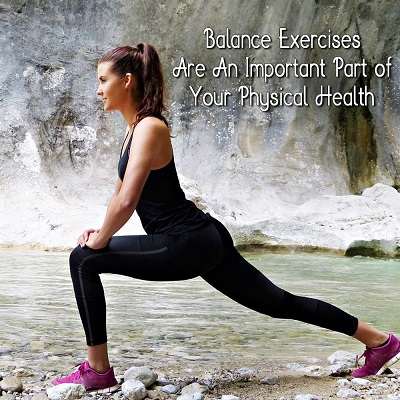 Balance. Without it, it would be hard to function the way we hope and want to. Standing upright would be difficult if not impossible to do. With poor balance, we are at a much greater risk of injuries and falls.
Balance. Without it, it would be hard to function the way we hope and want to. Standing upright would be difficult if not impossible to do. With poor balance, we are at a much greater risk of injuries and falls.
Therefore, balance exercises should be part of our routine, along with flexibility, stability, and mobility exercises. When you develop balance, you can move when and where you want, and you can do it easily. You can maintain your independence even as you age.
The Benefits of Balance Exercises
Many people sit in front of their computers for hours every day. They either need to or want to. Sitting all day prevents doing balance movements, and this sedentary lifestyle leads to physical fitness problems, such as poor posture, limited mobility, and lack of flexibility. Balance exercises can help improve your physical health and fitness in many ways.
Better Coordination and Reaction Time
Balance training can help different parts of your body to work together, preventing you from falling or stumbling. It improves your reflexive response, so you can intuitively adapt to situations.
Balance exercises improve your ability to change your movement immediately, such as when you are changing directions abruptly. You then need to rebalance your body quickly, or you might fall.
Improved Posture
Improving balance helps you perform the right static and dynamic positions of the body.When your body is in proper alignment, your blood circulates properly to support your muscles and nerves. Good posture also reduces aches and pains and minimizes strains and injury.
Increased Body Awareness and Stability
When you develop improved body balance, your joints, such as your knees, ankles, shoulders, and hips, become more stable. This prevents many injuries and strengthens your ligaments and tendons.
Balance training also makes you more aware of your body parts and how they move in space, which reduces your likelihood of suffering from injury. Body awareness also leads to better balance and stability.
Increased Muscular Strength
Working on your balance helps strengthen your muscles, including your core muscles and legs. In turn, that allows you to keep yourself upright and increase your power output or the amount of force you can exert. Stronger muscles also means better posture, increased endurance, and improved mobility.
How to Improve Your Balance
You can improve your balance by incorporating balance training into your workout routine or regular physical activities. While different balance exercises target different aspects like mobility, stability, and flexibility, you don’t have to hit all of them at the same time in one workout session. Take them one by one and have some patience.
Here are some exercises that you can do to improve your balance:
- Bridges – target gluteal and abdominal muscles and relieve excess stress in the lower back.
- Tandem walking – strengthens leg and trunk muscles and improves coordination.
- Plank pose – strengthens muscles in the shoulders, back, core, glutes, and hamstrings and improves posture by properly aligning the spine.
- Hip flexor stretch – opens the hips to improve balance, coordination, and posture.
- Sit to Stand – strengthens leg, core, and back muscles to increase mobility and independence.
- Other balance exercises include yoga and Tai Chi.
You can do balance exercises anytime, anywhere, and you don’t need any special equipment. Even while brushing your teeth or washing the dishes, you can practice balancing by simply standing on one foot, and alternating.
Balance improves mobility, stability, flexibility, and endurance, allowing you to be more independent as you age. Balance exercises are a crucial part of your physical fitness. Make sure that you incorporate them into your routine. Balance exercises are relatively easy but always practice caution so you don’t fall while trying to perform them.





